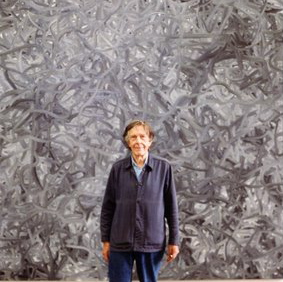Gerhard Richter's cage painting
/Let's begin at the end of the show, with the Cage paintings. Starting with loose gestural marks, Richter steadily smears and obliterates the wet surface until what is left is an opaque film that only faintly reveals the fractured trace or accidental residue of previous actions. To the extent it follows its own logic it is reductively ‘abstract’, but without the floating incidents that animate Abstract 849 for example, there is little to hold onto visually, little to suggest a way in or through the pallid top coat. The surface, now verging on emptiness, becomes the work. The gallery text, by way of explanation, alludes to John Cage’s gnomic statement, ‘I have nothing to say and I am saying it’, while Richter, in his recent interview with Nicholas Serota, states that ‘paintings show what isn’t there’.
But it is unclear to me whether he means there is something which painting cannot grasp or whether there is nothing (or only silence) beyond the paint’s surface. If most painters instinctively adopt the former position, the latter is undoubtedly a more challenging premise from which to begin working, If there is nothing to begin with, then is the paint simply an iterative statement of existence (Richter: ‘I have no choice. I do it’), leaving the viewer with nowhere to go? The curatorial reference to Cage, resting on a title originally proposed by another curator, might equally be construed as another sort of cage, from which neither painter nor painting can escape.
Gerhard Richter: Panorama, Tate Modern, to Jan 2012























